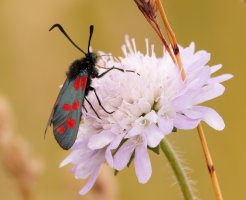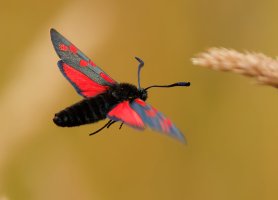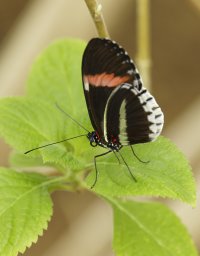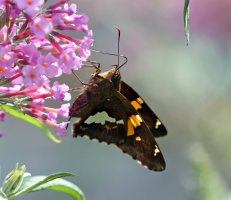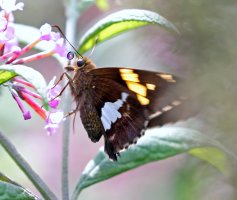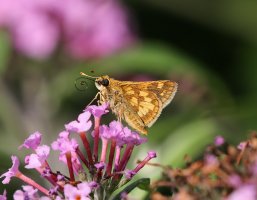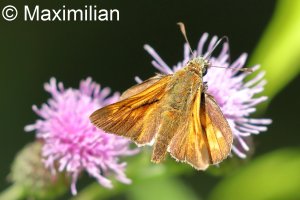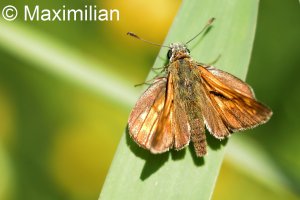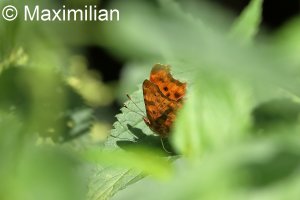You are using an out of date browser. It may not display this or other websites correctly.
You should upgrade or use an alternative browser.
You should upgrade or use an alternative browser.
Butterflies, Moths and Assorted Insects...
- Thread starter dpc
- Start date
A big advantage of the R5 compared to the R is the focus bracketing.
This one of a wool bee was done hand held. The bee rested on a bench a short time and the movement of the wing and leg caused some problems. That's why I cannot tell the number of used pictures. Maybe 45
R5, Sigma 105Macro @1/400, ISO 800, f/5
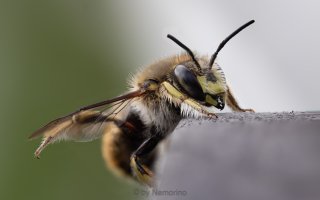
This one of a wool bee was done hand held. The bee rested on a bench a short time and the movement of the wing and leg caused some problems. That's why I cannot tell the number of used pictures. Maybe 45
R5, Sigma 105Macro @1/400, ISO 800, f/5

Upvote
0
Nice! How do yiu stack them?A big advantage of the R5 compared to the R is the focus bracketing.
This one of a wool bee was done hand held. The bee rested on a bench a short time and the movement of the wing and leg caused some problems. That's why I cannot tell the number of used pictures. Maybe 45
R5, Sigma 105Macro @1/400, ISO 800, f/5
View attachment 198975
Upvote
0
I use Helicon FocusHow do yiu stack them?
The BIF is great.Tiny 6 Spot Burnet moths on scabious. R5+100-500mm
Upvote
0
Thanks, Click!Beautiful series. I especially like the 3rd picture. Well done, usern4cr.
Upvote
0
josephandrews222
I Shot the Sheriff, but I Did Not Shoot the Deputy
Fun & Learning With Butterflies
A few days ago I posted this one:

As identified previously, it is likely that this is an Eastern Tiger Swallowtail.
After some research (and a bit of common sense on my end in terms of seeing this one with its partner), I can further identify this as a (likely) male Eastern Tiger Swallowtail.
That's because, nearby, was another butterfly...which at first I could not identify:

The blue detail of this dark butterfly (5D Mk III + 100-400 II @ 400) amazes me...
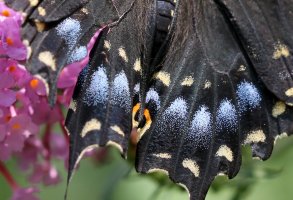
But after reading this:
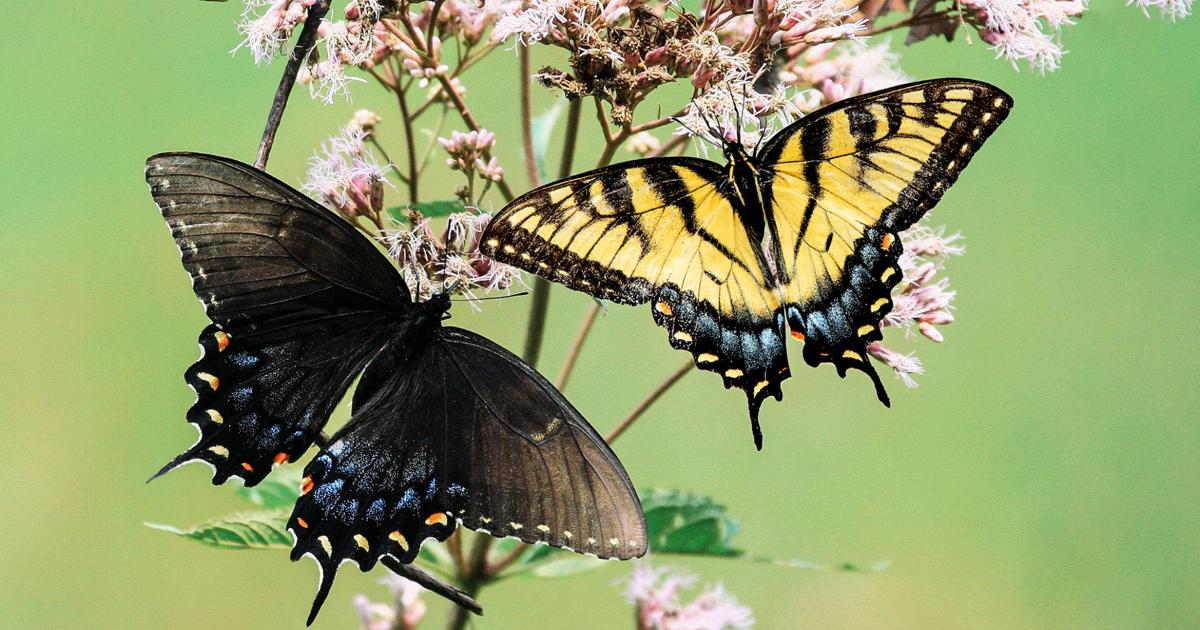
 www.yoursun.com
www.yoursun.com
...it turns out the dark butterfly is most likely a female Eastern Tiger Swallowtail!
From the link (between the XXXs):
XXX
Some female tiger swallowtails occur in a black color phase, which looks very much like a black swallowtail.
But why though? According to the laws of natural selection, all organisms are shaped by their environments. Those that are a poor fit are less likely to survive long enough to reproduce. So what is it that has caused these butterflies to adopt such strikingly different color patterns? As adults, they share the same general habitat, the same predators, the same food sources.
As it turns out, you have to look at other species to make sense of the puzzle. There is another butterfly, the pipevine swallowtail, that is also black with blue iridescence. Pipevine swallowtails are named for the food they eat as caterpillars — toxic plants in the Aristolochia genus. These toxins remain in their bodies even as adults, making them distasteful to birds and many other predators.
Now it makes sense. Black swallowtails, black phase tiger swallowtails, and a handful of other related species all benefit from a resemblance to their poisonous cousin. This is similar to the more familiar situation in which the monarch butterfly, which gets its toxicity from milkweeds, is imitated by the perfectly edible queen and viceroy butterflies. This type of imitation is called Batesian mimicry, and there are lots of Batesian species complexes out there.
OK, mystery solved! Except — if imitating a toxic relative is such an effective strategy, why aren’t all tiger swallowtails black? In some areas, most females are black, but not all. And males always have those easily seen bright yellow wings. Hmmm …
There’s another force at work here: Sexual selection. If you outfox your predators but can’t find a mate, then your genes don’t get passed on to the next generation. And that’s what happens with some of the black phase tiger swallowtails. Even though dark females still act just like other tiger swallowtails, and even though they produce the same pheromones, males just aren’t as interested in them. These guys are apparently traditionalists and prefer the good ol’ yellow and black that their species is known for.
XXX
One more female Eastern Tiger Swallowtail...
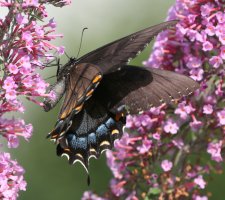
...and surely a wise (and snarky!) CR reader can make (up) some connection between butterfly mating and human mating
A few days ago I posted this one:

As identified previously, it is likely that this is an Eastern Tiger Swallowtail.
After some research (and a bit of common sense on my end in terms of seeing this one with its partner), I can further identify this as a (likely) male Eastern Tiger Swallowtail.
That's because, nearby, was another butterfly...which at first I could not identify:

The blue detail of this dark butterfly (5D Mk III + 100-400 II @ 400) amazes me...

But after reading this:

Why are you that color? The strange case of the dark phase tiger swallowtail
The coloration of animals is an interesting study. One of the stranger aspects is the fact that creatures which are similar and lead similar lifestyles can be remarkably different in
...it turns out the dark butterfly is most likely a female Eastern Tiger Swallowtail!
From the link (between the XXXs):
XXX
Some female tiger swallowtails occur in a black color phase, which looks very much like a black swallowtail.
But why though? According to the laws of natural selection, all organisms are shaped by their environments. Those that are a poor fit are less likely to survive long enough to reproduce. So what is it that has caused these butterflies to adopt such strikingly different color patterns? As adults, they share the same general habitat, the same predators, the same food sources.
As it turns out, you have to look at other species to make sense of the puzzle. There is another butterfly, the pipevine swallowtail, that is also black with blue iridescence. Pipevine swallowtails are named for the food they eat as caterpillars — toxic plants in the Aristolochia genus. These toxins remain in their bodies even as adults, making them distasteful to birds and many other predators.
Now it makes sense. Black swallowtails, black phase tiger swallowtails, and a handful of other related species all benefit from a resemblance to their poisonous cousin. This is similar to the more familiar situation in which the monarch butterfly, which gets its toxicity from milkweeds, is imitated by the perfectly edible queen and viceroy butterflies. This type of imitation is called Batesian mimicry, and there are lots of Batesian species complexes out there.
OK, mystery solved! Except — if imitating a toxic relative is such an effective strategy, why aren’t all tiger swallowtails black? In some areas, most females are black, but not all. And males always have those easily seen bright yellow wings. Hmmm …
There’s another force at work here: Sexual selection. If you outfox your predators but can’t find a mate, then your genes don’t get passed on to the next generation. And that’s what happens with some of the black phase tiger swallowtails. Even though dark females still act just like other tiger swallowtails, and even though they produce the same pheromones, males just aren’t as interested in them. These guys are apparently traditionalists and prefer the good ol’ yellow and black that their species is known for.
XXX
One more female Eastern Tiger Swallowtail...

...and surely a wise (and snarky!) CR reader can make (up) some connection between butterfly mating and human mating
Upvote
0
OK, my first GIF!
While I was looking for solitary bee I noticed a very, very tiny fly flying nearby. Maybe 3 or 4mm .
Surprisingly the R5 could track the little insect, but the IQ is just acceptable.
All cropped down to 1979 pixel.
R5, Sigma 105 @ 1/2500s, ISO 1600, f/2.8 or f/3.2
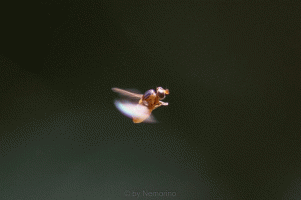
This one of the series was cropped to 1117 pixel:
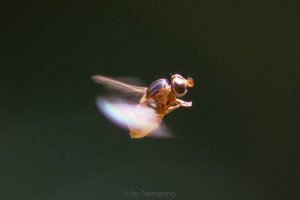
While I was looking for solitary bee I noticed a very, very tiny fly flying nearby. Maybe 3 or 4mm .
Surprisingly the R5 could track the little insect, but the IQ is just acceptable.
All cropped down to 1979 pixel.
R5, Sigma 105 @ 1/2500s, ISO 1600, f/2.8 or f/3.2

This one of the series was cropped to 1117 pixel:

Upvote
0
- Oct 29, 2016
- 650
- 1,205
- 6,034
To my eyes, your female Eastern Tiger Swallowtail keeps reminding me of Batman with his cape extended. I probably should get out more often...Fun & Learning With Butterflies
A few days ago I posted this one:
View attachment 199017
As identified previously, it is likely that this is an Eastern Tiger Swallowtail.
After some research (and a bit of common sense on my end in terms of seeing this one with its partner), I can further identify this as a (likely) male Eastern Tiger Swallowtail.
That's because, nearby, was another butterfly...which at first I could not identify:
View attachment 199018
The blue detail of this dark butterfly (5D Mk III + 100-400 II @ 400) amazes me...
View attachment 199020
But after reading this:

Why are you that color? The strange case of the dark phase tiger swallowtail
The coloration of animals is an interesting study. One of the stranger aspects is the fact that creatures which are similar and lead similar lifestyles can be remarkably different inwww.yoursun.com
...it turns out the dark butterfly is most likely a female Eastern Tiger Swallowtail!
From the link (between the XXXs):
XXX
Some female tiger swallowtails occur in a black color phase, which looks very much like a black swallowtail.
But why though? According to the laws of natural selection, all organisms are shaped by their environments. Those that are a poor fit are less likely to survive long enough to reproduce. So what is it that has caused these butterflies to adopt such strikingly different color patterns? As adults, they share the same general habitat, the same predators, the same food sources.
As it turns out, you have to look at other species to make sense of the puzzle. There is another butterfly, the pipevine swallowtail, that is also black with blue iridescence. Pipevine swallowtails are named for the food they eat as caterpillars — toxic plants in the Aristolochia genus. These toxins remain in their bodies even as adults, making them distasteful to birds and many other predators.
Now it makes sense. Black swallowtails, black phase tiger swallowtails, and a handful of other related species all benefit from a resemblance to their poisonous cousin. This is similar to the more familiar situation in which the monarch butterfly, which gets its toxicity from milkweeds, is imitated by the perfectly edible queen and viceroy butterflies. This type of imitation is called Batesian mimicry, and there are lots of Batesian species complexes out there.
OK, mystery solved! Except — if imitating a toxic relative is such an effective strategy, why aren’t all tiger swallowtails black? In some areas, most females are black, but not all. And males always have those easily seen bright yellow wings. Hmmm …
There’s another force at work here: Sexual selection. If you outfox your predators but can’t find a mate, then your genes don’t get passed on to the next generation. And that’s what happens with some of the black phase tiger swallowtails. Even though dark females still act just like other tiger swallowtails, and even though they produce the same pheromones, males just aren’t as interested in them. These guys are apparently traditionalists and prefer the good ol’ yellow and black that their species is known for.
XXX
One more female Eastern Tiger Swallowtail...
View attachment 199021
...and surely a wise (and snarky!) CR reader can make (up) some connection between butterfly mating and human mating
Upvote
0
josephandrews222
I Shot the Sheriff, but I Did Not Shoot the Deputy
becceric--Batman extends his cape here:To my eyes, your female Eastern Tiger Swallowtail keeps reminding me of Batman with his cape extended. I probably should get out more often...
tinyurl.com/3sx5tafm
"It's not who I am underneath, but what I do that defines me."
...one of my favs, actually!=====
...which reminds me: I haven't seen any bat pix on CR! (I'll bet they're here but I just haven't looked
Upvote
0
What focus bracketing settings did you use on the R5?A big advantage of the R5 compared to the R is the focus bracketing.
This one of a wool bee was done hand held. The bee rested on a bench a short time and the movement of the wing and leg caused some problems. That's why I cannot tell the number of used pictures. Maybe 45
R5, Sigma 105Macro @1/400, ISO 800, f/5
View attachment 198975
Upvote
0
Upvote
0
Upvote
0
Similar threads
- Replies
- 30
- Views
- 1K
- Replies
- 2
- Views
- 5K


